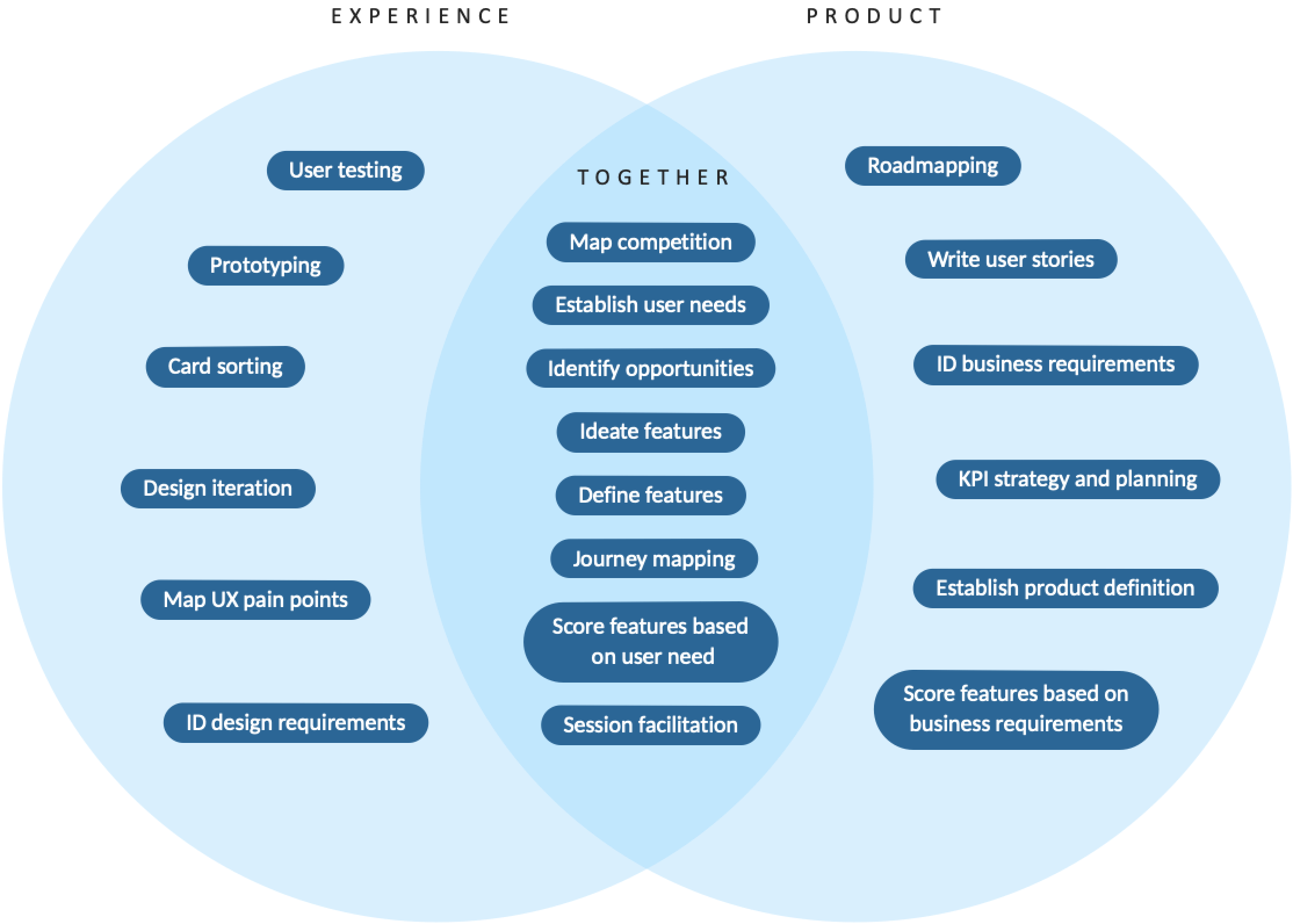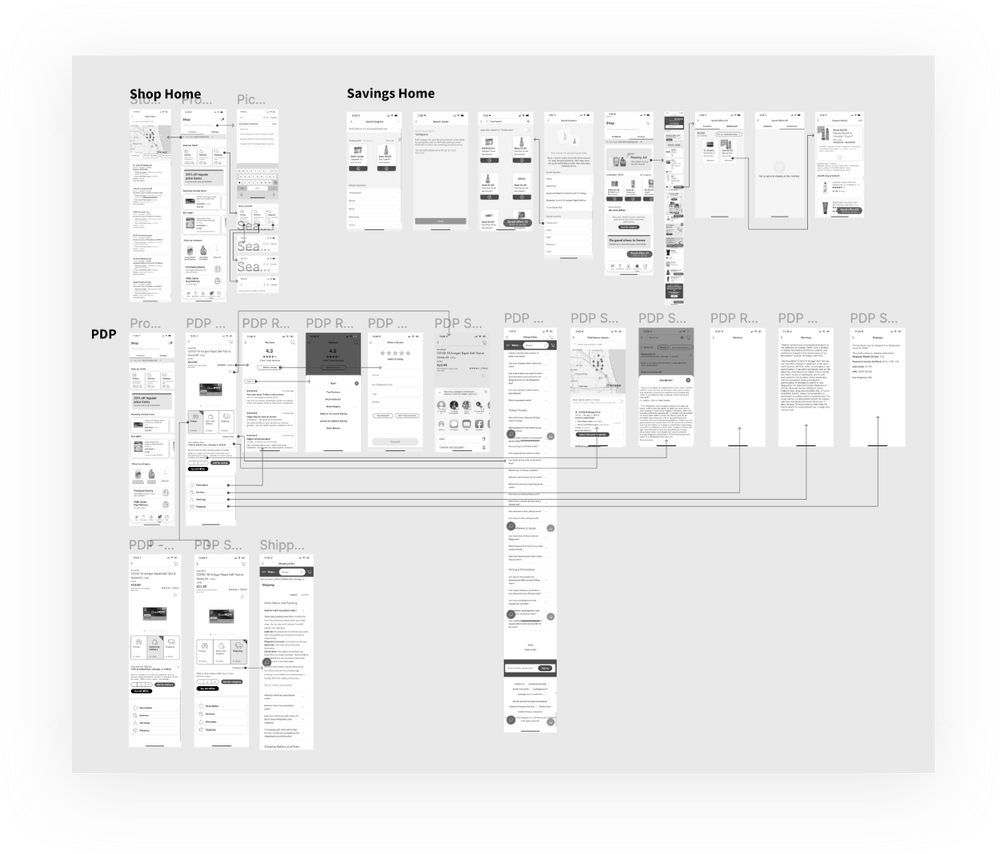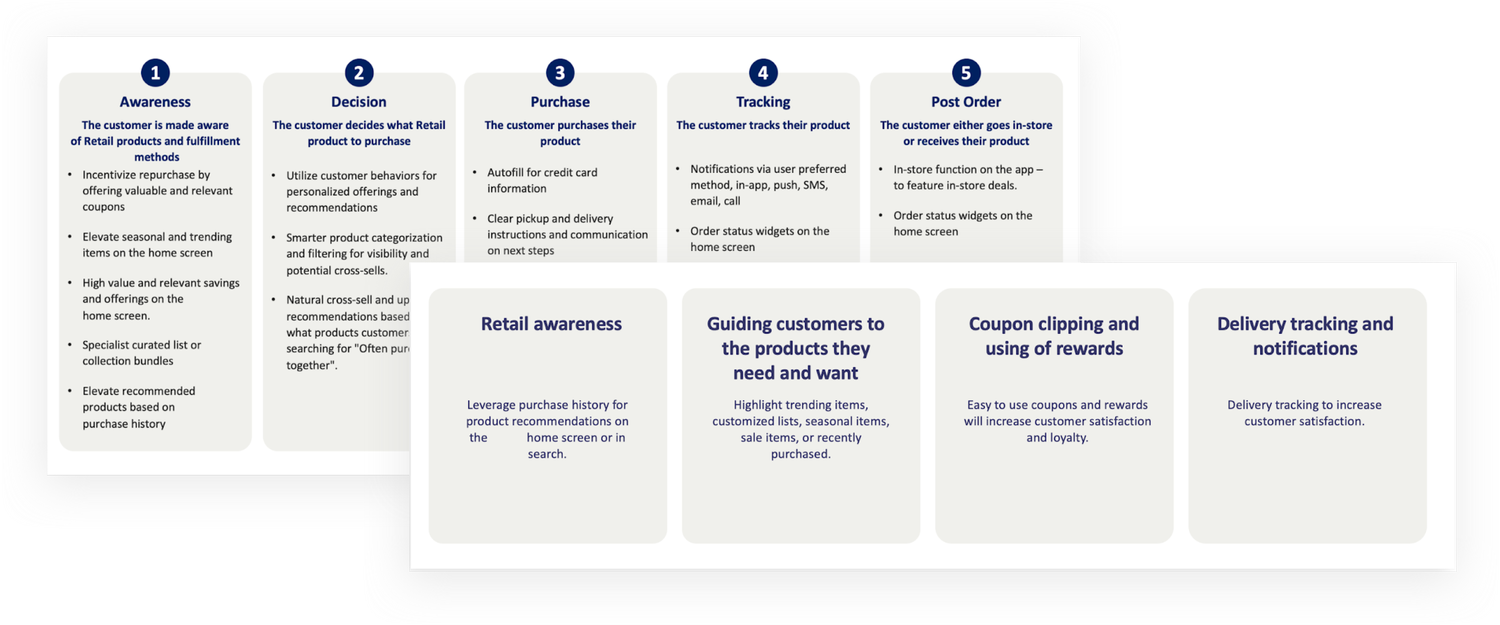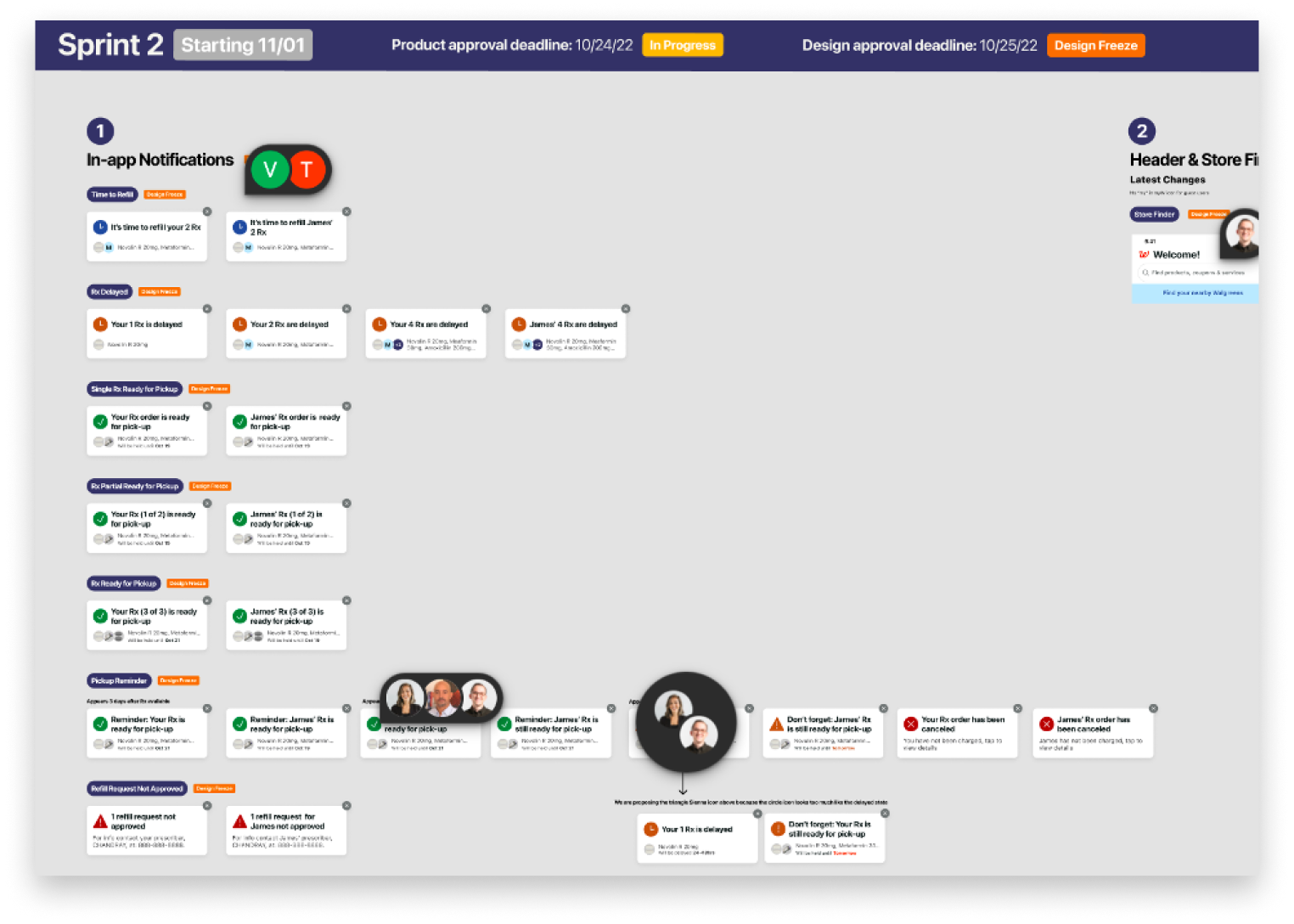KLG
A mobile redesign on consumer retail products and health services
This project is about team leadership, collaborating with product & development teams, and promoting key business metrics
The Vision
KLG consists of five lines of businesses which promote various product offerings and services. The business wants to promote cross-channel opportunities and increase customer engagement on their mobile platform. These should help the business pivot from a retail focused service to one of health and wellness.
My Role & Responsibilities
As a design lead, I led design strategy and direction for the pod responsible for 3 of business with a small team of designers and product owners.
Later, I stepped up to replace the role of experience director, as they were rolled off, I assumed the responsibilities of managing all 5 lines of businesses and 2 design tracks. I was successful and effective in this role for 2 months, until the final hand off of the project.
The Challenges
How might I increase the customer’s experience and promote the lines of businesses?
Key Metrics
Improve customer engagement
Increase NPS
Increase user registration / onboarding
Promote KLG health products and services
Increase overall basket size
How can I better informed about the product landscape, best practices, and industry leaders?
Competitive Analysis of industry mobile leaders for features/functionalities relating to health, retail, pharmacy, and general global controls
Interviews with customers and stakeholders to understand requirements and expectations
How can I better understand the current product and the customer’s experience?
Mapping of the current live application with heuristic evaluation + collaboration with analytics data
Review synthesis of feedback left by customers on app store/review sites and identifying trends
How can I help the project team better communicate, understand requirements, and efficiently collaborate together on multiple fronts?
Utilizing tools such as MS planner for action items and accountability as a design lead, and creating shared co-working spaces within Figma/Miro to collaborate and brainstorm solutions together.
How can I validate the design direction and receive early customer feedback before delivery?
Usability testing of newly updated designs and features
Resonance testing for proposed discovery and future state components
My Design Strategy
Learning & Understanding
Understand the current product experience and what customers are saying. Compare that to industry leaders and identify where the gap is. This, in addition to requirements helps to narrow the scope and focus on where to start.
Ideating & Problem-solving
Using the aforementioned research and requirements, I led ideation with the design and product teams, identifying pain-points, frustrations, and opportunities to alleviate them. I empowered my team to think outside of the box and provided guidance and mentorship on problem-solving.
Designing & Validating
Through meticulous iterations and continuous feedback from product, tech, and business series of wireframe designs were created and tested with customers. New features, onboarding experiences, and updated layouts and functionalities received excellent feedback.
Relearning & Reiterating
Based on the feedback from customers and stakeholders, I led my team to continue to “push the envelope” and advocated for design recommendations and future features.
Research Process
I had to strategize and understand the product I am working to improve. I led my team through avenues of competitive analysis, mobile best practices, and a current state experience/journey map.
Insights from these help to answer initial questions, provide background knowledge, and establishes the foundation in which we can begin to iterate.
Holistic and Feature level analysis of well designed experiences from competitors
Journey mapping to identify user frustrations, pain points, gaps, and opportunities
A current state mapping of the live application to understand the current flows and existing gaps
Defining the experience into a consolidated view for the product and experience team for alignment
Aside from understanding the product, when features were redesigned, I needed a quick way to gather information from customers and rapidly reiterate.
This is where I utilized resonance testing to quickly understand if these proposed recommendations and features were desirable to customers and if they would increase customer engagement and awareness of products across the lines of businesses.
Customer feedback was distilled and synthesized into multiple mediums. Key insights and trends were captured, providing an overall theme.
These themes help to emerge an actionable plan on how to tackle certain areas of the designs based on what we heard and learned, pinpointing the exact component causing confusion or as a chance to explore further.
The Customers
The Key Findings
Re-Analysis of the UI
Actionable Themes
Design Process
The designs focused on improve various business metrics and identifying areas for cross-channel promotion. This meant a lot of exploration, iteration, and proposing ideas.
Initial Wireframes for IA, Placement, and Content Strategy
A client facing board for direct real-time collaboration with stakeholders
A snippet of Design iterations and organization I set for my team
Impact & Insights
The final deliverables were several sets of wireframes that highlighted recommended new and improved features along with research findings. Based on testing results, the direction and strategy utilized were effective positively perceived by the customers and business. They were found to be desirable, efficient, and achieved its goal of increasing engagement and awareness.
As a lead, my mail goal is to ensure that my team is able to succeed. To do this, I carefully and meticulously worked on creating both autonomy and transparency. This helped to ensure that my team stayed on the same page and had a shared vision.
There were challenges in the beginning with cross-team communication and siloed working spaces. I spotted opportunities to streamline our process to better collaborate and communicate. I was able to empower my team by providing space and setting boundaries, allowing my designers to explore, iterate, and be imaginative in their approach. I listened and respected my team’s preferred ways of working. Doing so and successfully incorporating those into our design process help to build trust and ensured successful design delivery.
I was awarded a monetary bonus for my contributions and work on the project as it was so positively impactful. During this time, I worked briefly from Taiwan with a 12 hour time difference without any impediment to the team.

















